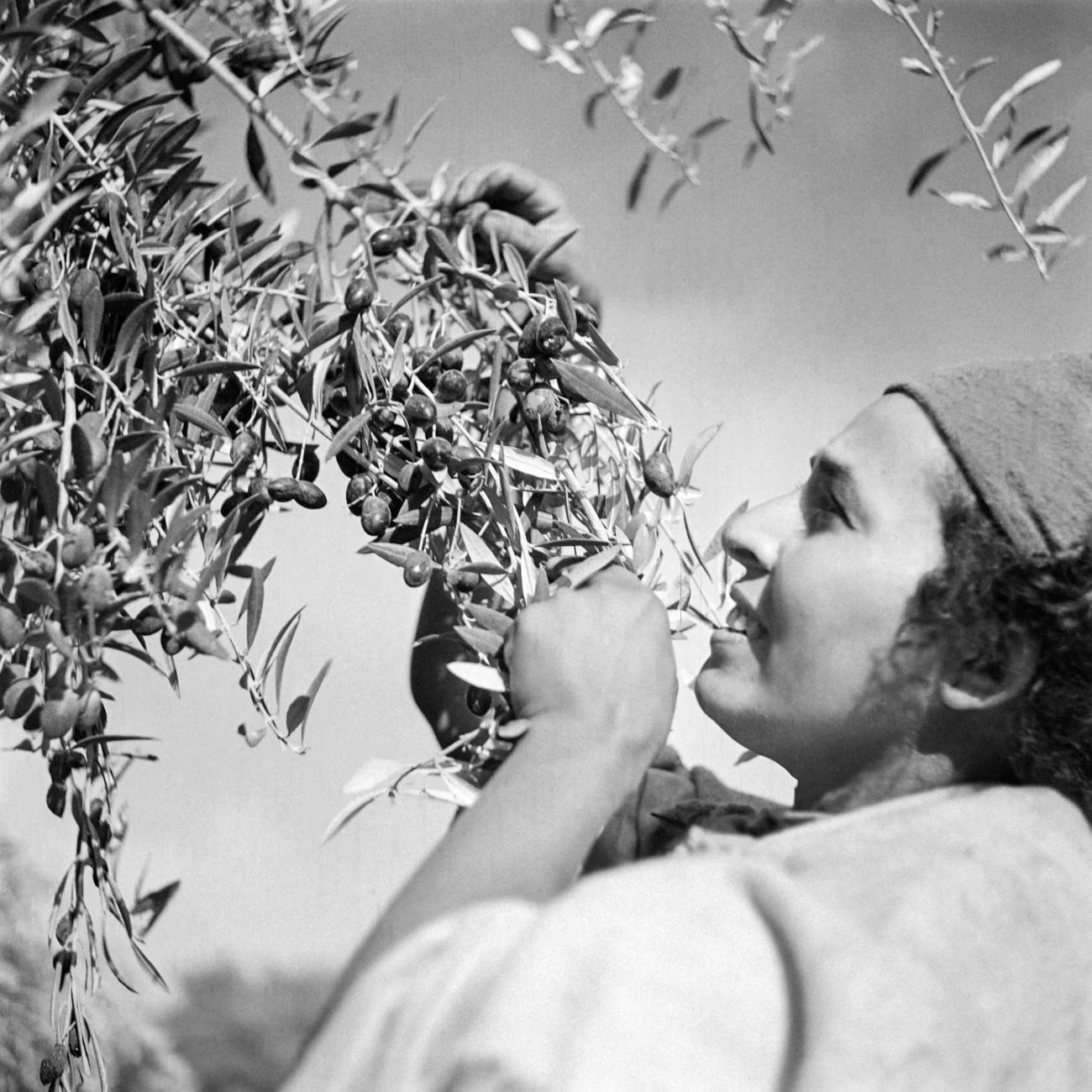Small Wonder
The tiny olive has been beloved for thousands of years—with good reason




As fall begins, it is time once again for the olive harvest: Green olives are usually harvested in September and October, while black olives are usually picked between November and January.
Olives have been gathered in the Eastern Mediterranean since time immemorial. According to Jewish tradition, the first olive seed fell from paradise and landed on Adam’s tomb—as a gift from God to mankind. In Greek myth, it is said that Hercules brought the first olive tree to Greece and planted it in Olympia, from where they spread all over Greece. For millennia the olive has been a symbol of abundance, strength, peace, and sanctity, as well as renewal and fertility. Olives were often mentioned in the Hebrew Bible and were considered one of the most significant foods of the Land of Israel. According to the Mishna or Oral Torah, olive oil was the best oil for lighting the Shabbat candles. In the Quran, the olives were called a blessed fruit and were often eaten during Ramadan.
It was the Phoenicians and the Greeks who first introduced the olive to the Romans. Pliny the Elder wrote of 15 different species of olive tree, which had many uses in the ancient world. The tree was prized for its fine wood that was used to make bowls, kitchen utensils, furniture, and decorative objects, while olives were not only used for cooking, but for sacrificial offerings, lighting, and to make soap, ointments, and perfume; of course, they were also simply eaten as table olives. Olive leaves were used for their medicinal qualities: Even today olive leaf extract is said to be antibacterial, antifungal, and anti-inflammatory. More than anything else, of course, the olive is used to make olive oil—one of the fundamental ingredients of the Mediterranean diet to this day.
Olives have an extremely long life span. Some of the olive trees in the garden of Gethsemane at the foot of the Mount of Olives in Jerusalem are said to be more than 2,000 years old. Olives can vary in color from yellowish green to light brown, pinkish purple, and black according to their ripeness. As a general rule, the darker the olive is in color, the riper it was when picked from the tree.
Once they are picked, olives need to be cured before they are eaten, to make them palatable. Cured olives can vary greatly in flavor, texture, and size. Green olives have a firmer flesh with a tangy, more peppery taste. Black olives tend to be softer and milder, but much depends on the duration of the curing process.
There are several different methods of curing olives. They can be dry-cured in salt, cured in lye and a strong alkalizing solution of caustic soda or wood ash, or cured in brine, which not only helps to preserve the olives, but also transforms their sugar into lactic acid, which improves their flavor. They can also be water-cured: soaked in water or a very weak brine that is changed daily for up to two weeks to remove the bitterness. Sometimes the olives are cracked with a hammer in order to speed up the process. Once they are cured they can be preserved in brine or seasoned with garlic, parsley, thinly sliced celery, carrots, vinegar, olive oil, and sometimes chile pepper. Olives are widely used all around the Mediterranean in mezze and salads, and numerous vegetable dishes and stews. In Israel and the Middle East they are often served for breakfast with labneh and some crusty bread on the side.
The Kalamata olive from the Peloponnese in Greece is probably one of the best known in the world. It is purple in color with a meaty texture and an intense, fruity flavor with a hint of smokiness. It appears in the well-known horiatiki salata (Greek villager’s salad) alongside tomatoes, red onion, green pepper, cucumber, and feta. They also make a delicious addition to pasta, rice, salads, and stewed vegetables. Another well-known variety of olive is the brine-cured Amfissa olive from Delphi in central Greece, which can range in color from dark brown to black with soft flesh and a mellow, slightly sweet flavor. The Nicoise olive from Provence is dark purple in color with a distinctive herbal flavor with overtones of licorice. It is used to make salade Nicoise or tapenade—the well-known spread made with pureed black olives, capers, and anchovies—and as a table olive.
The green Castelvetrano olive from southwest Sicily has been dubbed the best-tasting olive in the world. It is prized for its mild, buttery-sweet taste and crisp, meaty texture. They are mainly used as a table olive, but also go well in salads, pasta dishes or with cheese. Another popular green olive is the Spanish manzanilla—meaning “little apple” in Spanish—which has a slightly smoky, almond-like flavor. It is often stuffed with pimento and is readily available in most supermarkets. The picholine olive—a small green olive with a fruity, slightly bitter flavor—was originally grown in southern France, but is now cultivated all over the world. It is widely known as the cocktail olive and often appears alongside a cheese board with some crusty bread on the side.
And olives are more than delicious. They are also good for you: Olives are rich in monosaturated fats, especially linoleic acid, which is said to lower the risk of coronary heart disease. Olives also contain phytonutrients that are said to prevent cancer and the loss of bone mass. Green olives usually contain more phytochemicals with antioxidant properties than black olives. But both olives are also rich in vitamin E, copper, iron, and calcium and may help protect against osteoporosis and Type 2 diabetes.
Paola Gavin is a food writer and author of four vegetarian cookbooks including Hazana: Jewish Vegetarian Cooking. Follow her on Instagram @paolagavin and on Twitter @paolagavinfood.